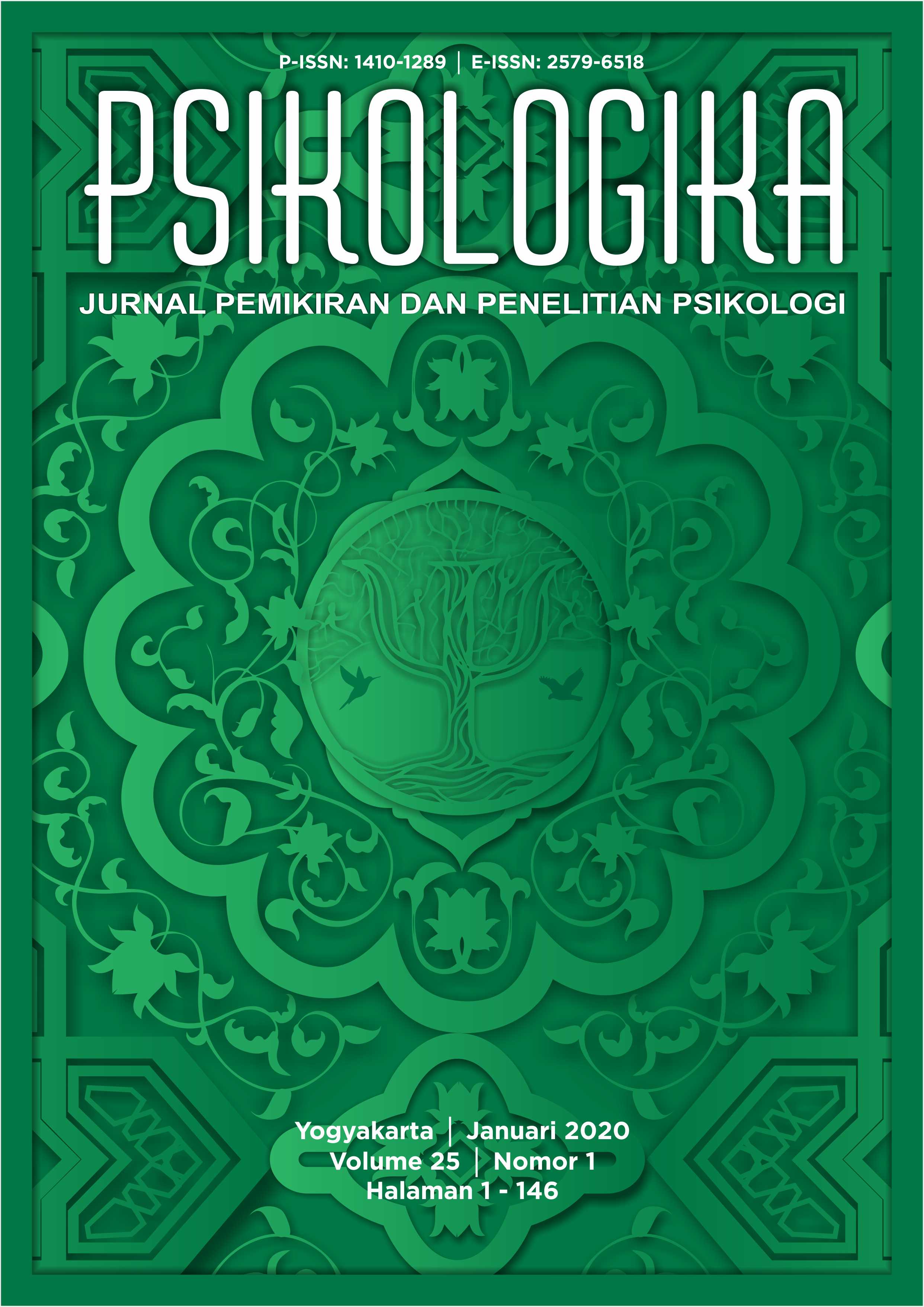Main Article Content
Abstract
Sindrom Down memiliki keterlambatan dalam hal kemandirian, salah satunya adalah mengancing baju. Mengancing baju merupakan kegiatan sehari-hari yang tidak dapat dihindari. Adapun tujuan penelitian ini adalah untuk meningkatkan keterampilan memakai baju berkancing melalui penerapan rantai perilaku (behavior chains) dengan teknik forward chaining (penetapan urutan perlakuan mulai dari awal hingga target perilaku tercapai) pada anak sindrom Down di SLB-C di kota Medan). Subjek penelitian ini berjumlah empat orang anak sindrom Down (7 – 12 tahun) yang belum mampu mengancing baju secara mandiri. Penelitian ini menggunakan rancangan penelitian eksperimen Small-N desain ABA. Pengaruh sebelum dan setelah diberikan intervensi diukur dengan menggunakan bantuan (prompt) sebagai dasar penilaian. Analisis keberhasilan efektivitas program menggunakan perbandingan data yang diperoleh dari hasil penilaian awal, intervensi, dan tindak lanjut. Terapi ini diberikan sebanyak 13 sesi. Hasil menunjukkan bahwa empat anak tersebut mampu untuk mengancing baju dengan menggunakan teknik forward chaining dari metode rantai perilaku. Setelah diberikan intervensi, maka terjadi peningkatan keterampilan memakai baju berkancing. Indikator dari peningkatan tersebut adalah dua anak mampu untuk mengancing baju tanpa bantuan dan dua anak lainnya mampu mengancing baju dengan sedikit bantuan instruksi secara verbal. Dengan demikian, hasil penelitian ini membuktikan bahwa rantai perilaku dengan teknik forward chaining mampu meningkatkan keterampilan memakai baju berkancing pada anak sindrom Down.
Kata Kunci: keterampilan, mengancing baju, rantai perilaku, sindrom Down
Behavior Chains to Improve The Skill of Wearing Buttoned Clothes in Down Syndrome Children
Abstract. Down syndrome has a delay in terms of independence. one of which is buttoning a shirt. Buttoning of clothes is a daily activity which cannot be avoided. Therefore the purpose of this study is to improve the skills to wear buttoned clothes through the application of behavior chains in children with Down syndrome at SLB-C Medan. The subjects of this study were four children with Down syndrome (7 – 12 years) who have not been able to button his clothes. This study was used the ABA small-N experimental design. The effect of before-after intervention measured by using “prompt” as basis of assessment. The analysis of program effectiveness based on comparison obtained from baseline, intervention, and follow up. A therapy was given in 13 sessions. The results showed that the four children were able to button their clothes using the forward chaining technique (sequential steps for achieving targeted behavior) from the behavior chains method. After the intervention was given, there was an increase in the skills to wear buttoned clothes, where two children were able to button clothes without prompt and the other two children were able to button clothes with a verbal prompt. Therefore, the results of this study prove that behavior chains with forward chaining technique can improve the skill of wearing buttoned clothes for children with Down syndrome.
Keywords: behavior chains, buttoning clothes, down syndrome, skills
Article History:
Received 5 November 2019
Revised 1 February 2020
Accepted 20 February 2020
Article Details
Authors who publish with this journal agree to the following terms:
- Authors retain copyright and grant the journal right of first publication with the work simultaneously licensed under a Creative Commons Attribution-ShareAlike 4.0 International License that allows others to share the work with an acknowledgment of the work's authorship and initial publication in this journal.
- Authors are able to enter into separate, additional contractual arrangements for the non-exclusive distribution of the journal's published version of the work (e.g., post it to an institutional repository or publish it in a book), with an acknowledgment of its initial publication in this journal.
- Authors are permitted and encouraged to post their work online (e.g., in institutional repositories or on their website) prior to and during the submission process, as it can lead to productive exchanges, as well as earlier and greater citation of published work (See The Effect of Open Access).




